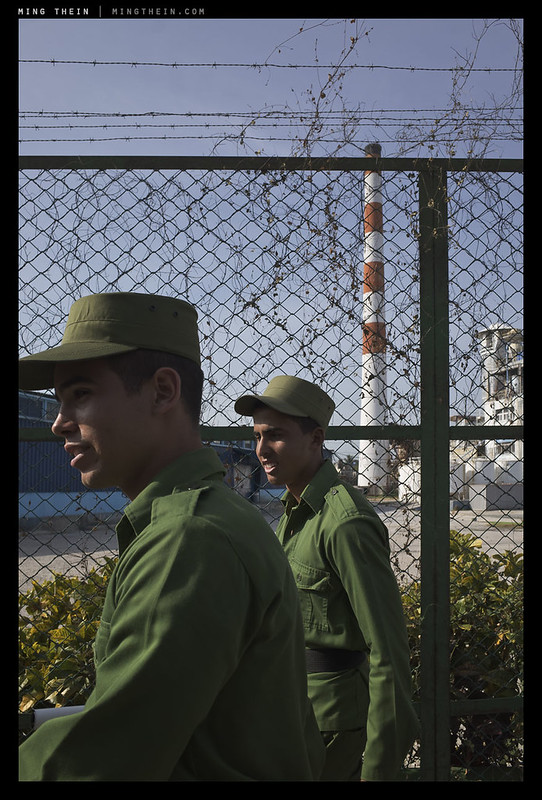
Soldiers, I. Apparently you are not supposed to photograph them, or secure installations. When faced with this kind of challenge I invariably have to get an image…
Today’s photoessay is the continuation of the curated collection of people I photographed in Havana – (part I is here) the tricky part was to try to avoid cliches (unsuccessful, I think) but at the same time get a decent representation of activity. I think many of my students did this better – my Asian reserve prevented me from sticking my head into doorways and windows of homes (though that’s different if I’m on assignment) – but beyond that, I prefer to photograph people in a natural state without them being conscious of my presence and changing their behaviour to suit; whatever it was they were doing that was interesting in the first place would almost certainly cease and change.
Sometimes, the most interesting moments are when the subject just realises your presence; there’s this sense of undeveloped potential that could go either way: they might be completely fine with you there and become open and friendly, or get quite aggravated and unhappy. In that small period of time, though they are semi-interacting with the camera, they are not fully conscious of it and it gives us a little more than the directly observable activity – facial expressions and body language offer an unguarded glimpse into an individual’s personality; more so than if they were lost in their own world or consciously putting on a face for the camera.
This set was shot with a Nikon D800E, Nikon 70-200/4 VR, Zeiss 1.4/55 Otus and Ricoh GR. MT
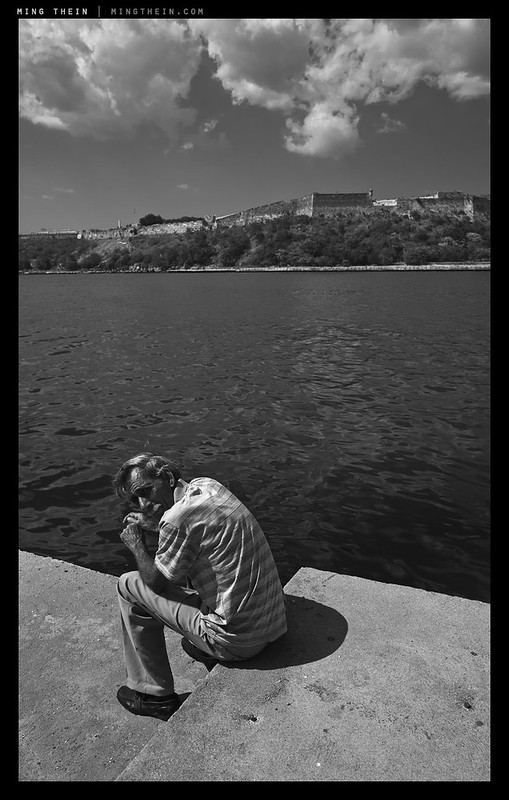
Old Man and The Sea (tribute to Hemmingway)

The Revolution is always with you
__________________
H2 2014 workshops now open for booking – Making Outstanding Images San Francisco, Chicago and Venice; Masterclass San Francisco and Venice – click here to book or for more info
____________
Visit the Teaching Store to up your photographic game – including workshop and Photoshop Workflow videos and the customized Email School of Photography; or go mobile with the Photography Compendium for iPad. You can also get your gear from B&H and Amazon. Prices are the same as normal, however a small portion of your purchase value is referred back to me. Thanks!
Don’t forget to like us on Facebook and join the reader Flickr group!
Images and content copyright Ming Thein | mingthein.com 2012 onwards. All rights reserved
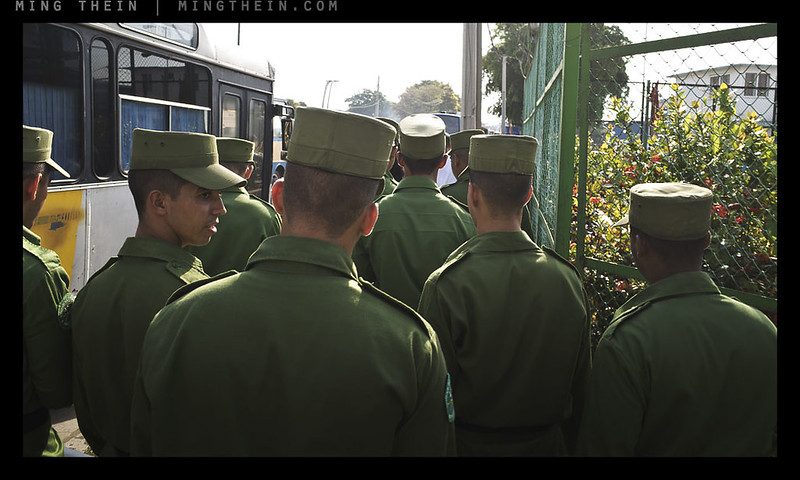
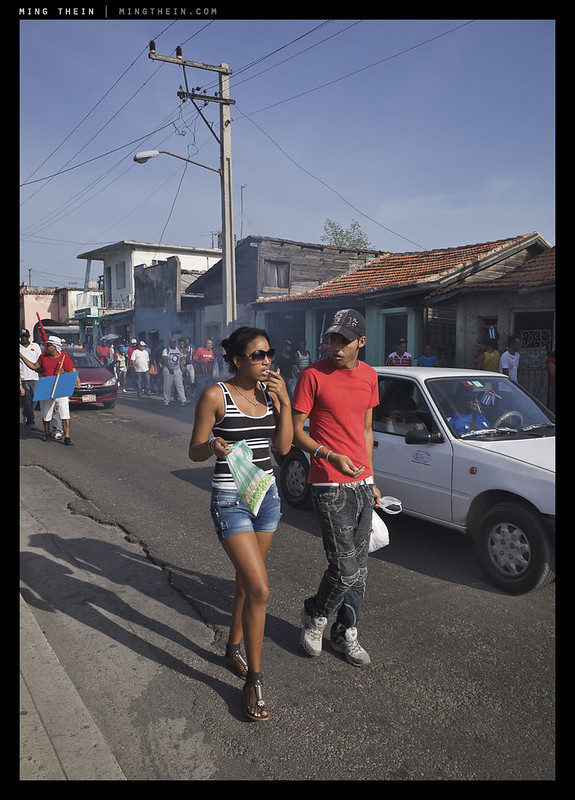
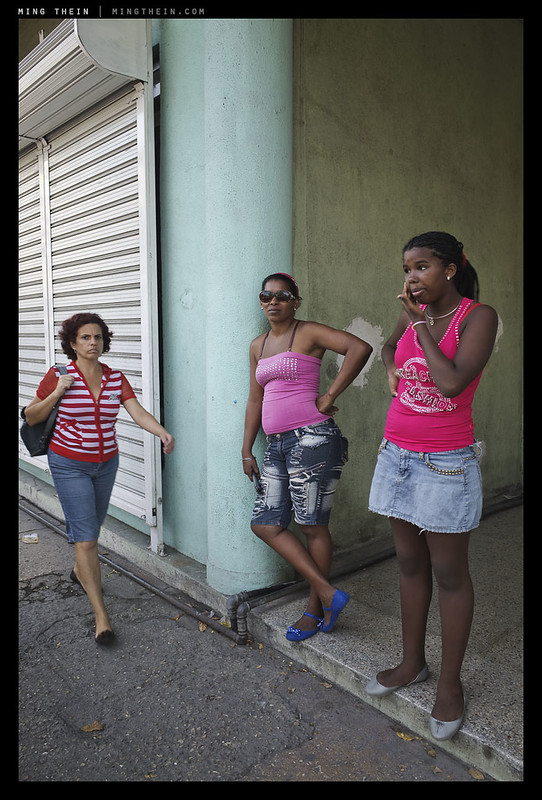
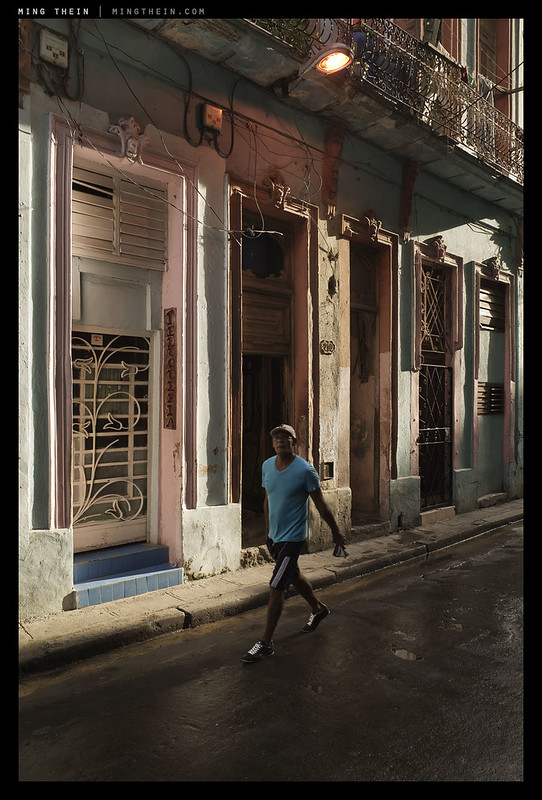
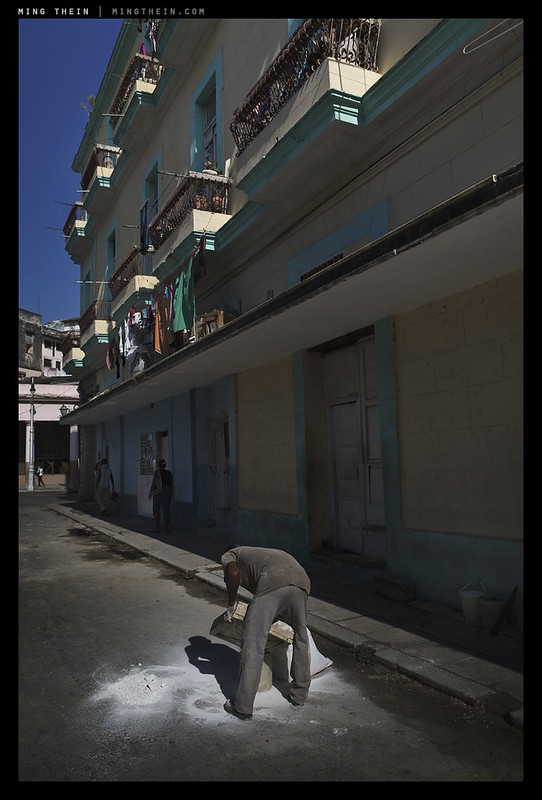
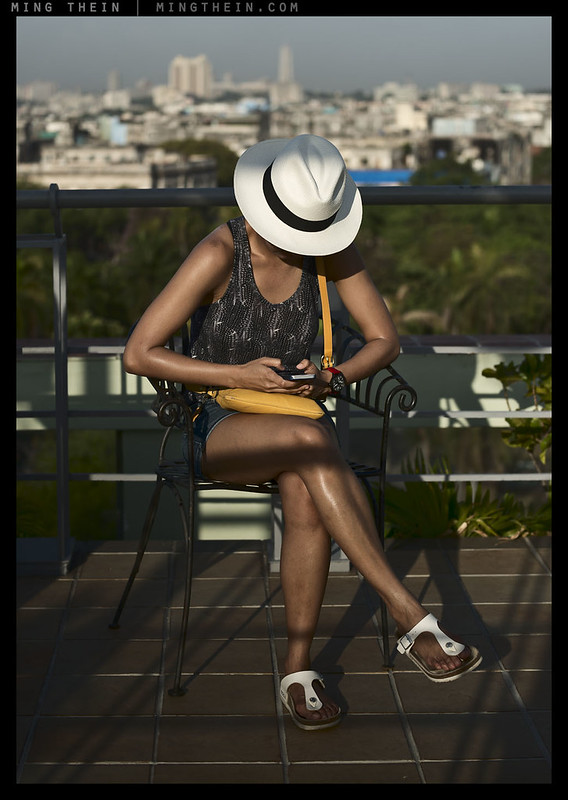
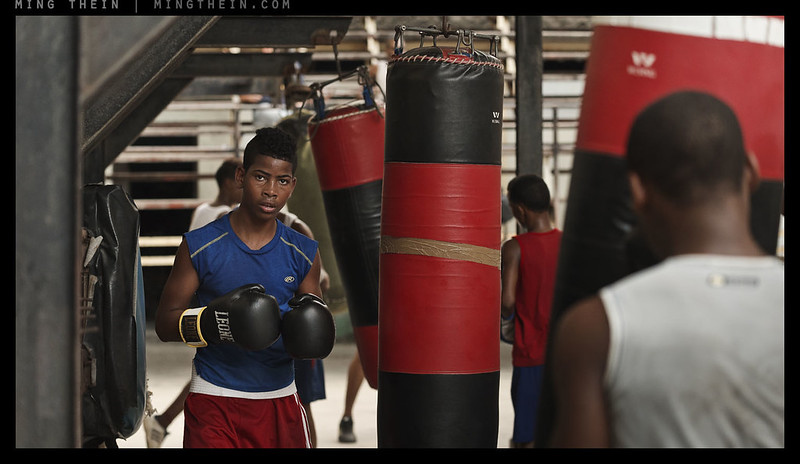
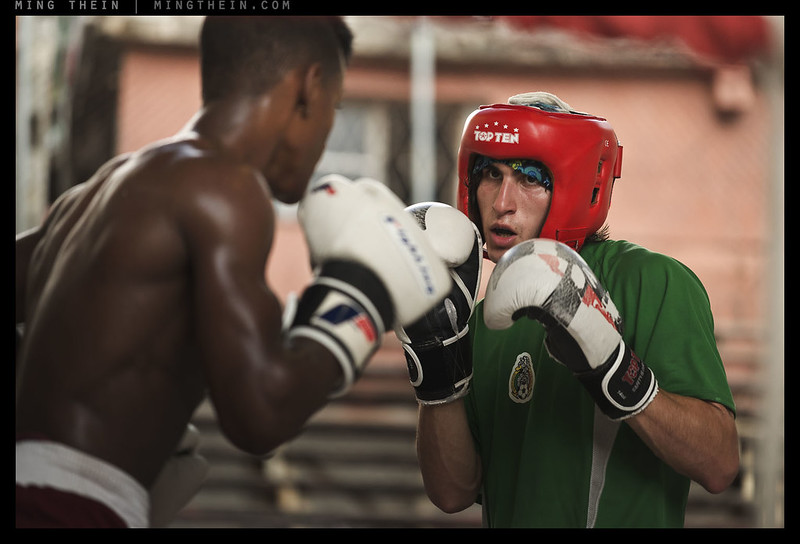
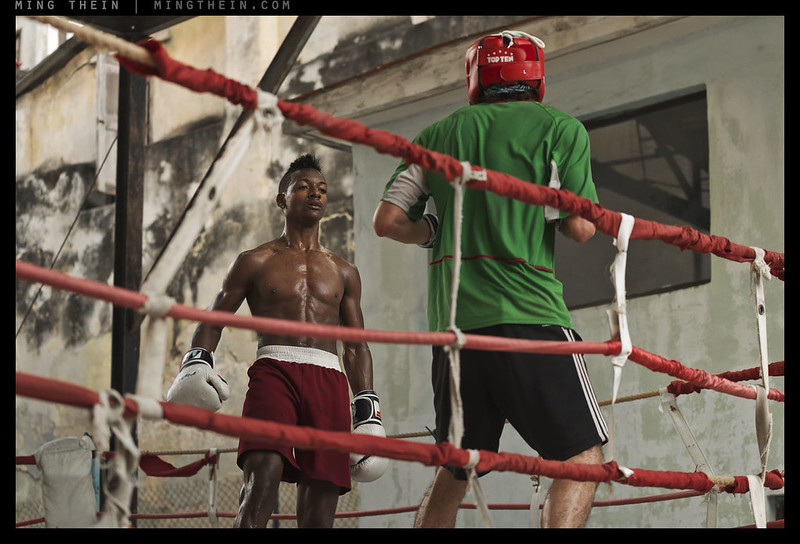

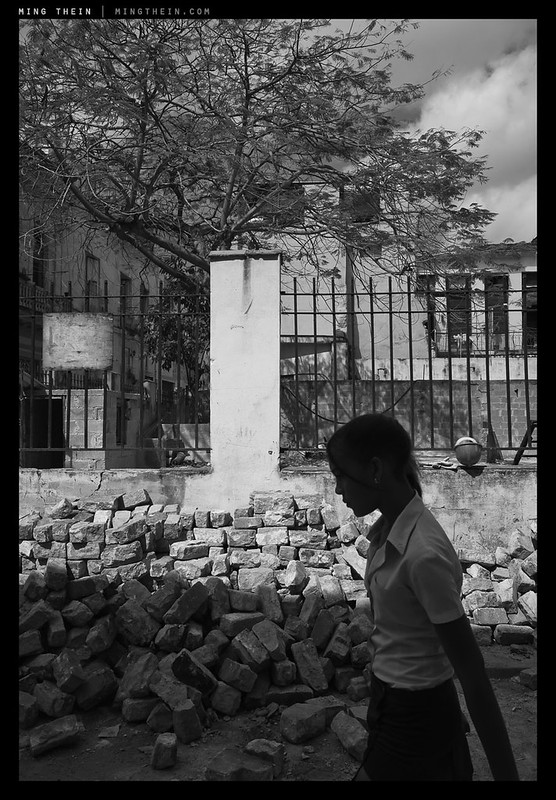
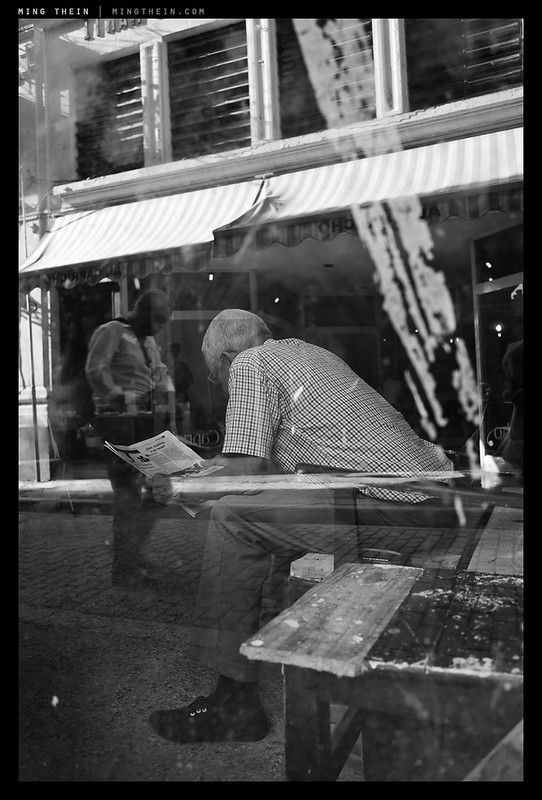
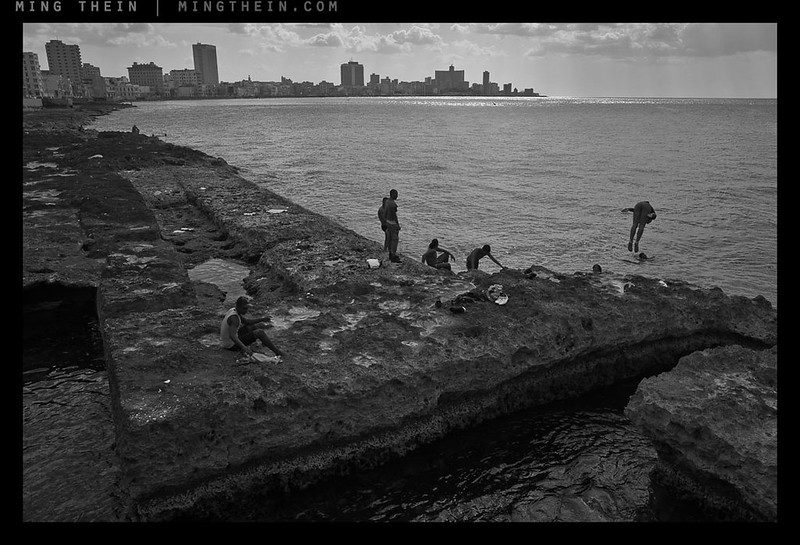
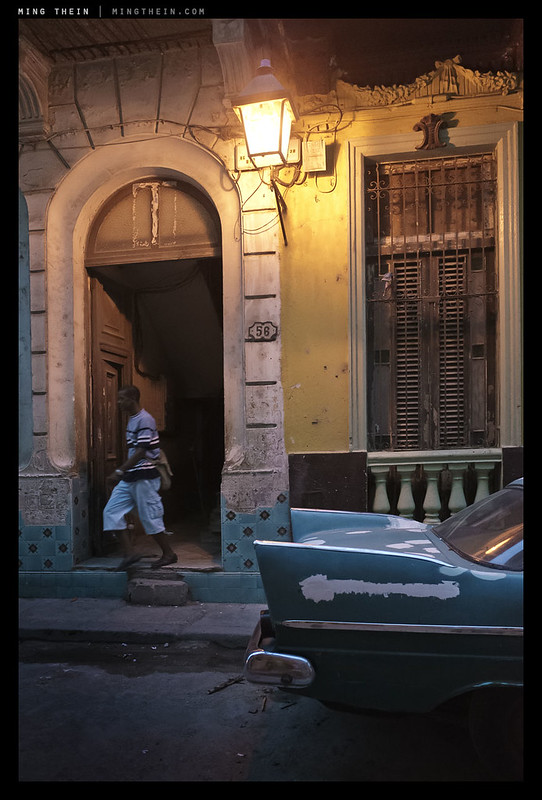







Faceoff II is epic man!
Thanks!
Cinematic, that set. Just like the work of a unit stills shooter. 😉
Thanks!
Hmmm, the goal is to avoid cliche? Trying to work my mind around that. I thought ‘urban style’, ‘nahdia’, and ‘old man’ excellent shots. The prisonlike structure behind the old man was insightful.
Love the b&w’s. Ken
Thanks.
really like the last one. Very evocative atmosphere, very expressive.
Thanks.
Well guess what, Ming, the strongest of the set is Evening In, precisely the one when you were not afraid (not too much) of intruding. And the boxing ones, when you were closer and clearly accepted. The others, well, you know. Cuba is humanly warmer than you have portrayed it…
Very attractive images, thank you for sharing them.
Is it vehicle exhaust that is visible in the street of “Urban style.”?
Thanks. Yes, their cars are not necessarily the newest or most efficient…
I’d figured it was ‘classic’ car exhaust but appreciate knowing I hadn’t been misreading it … I can practically smell the scene… 🙂
Actually, more like 1980s…not quite old enough to be classic.
Delightful series!
We were in Cuba a few years ago, and went on several trips arranged by the official agency which is army-run. Not a word about not photographing soldiers.
We were taken to the tomb of José Marti in Santiago de Cuba (by helicopter, that’s another story). There’s an honour guard there, changed every 30 minutes. They march along a short processional way, then down a few steps into the interior of the memorial tomb. I thought that there was something odd about them as I watched. It was only later that I discovered that the memorial’s architect had made the entrance rather too low; the soldiers on guard duty have to be specially selected—they have to be short.
Thank you – surprising they didn’t restrict you to photographing soldiers; I was told by many locals that it was a bad idea. Perhaps it’s a holdover from the earlier days of communism…
Great pictures. I loved “After the fight”. Emotion captured.
Thanks!
After I commented here, I saw that the same “After the fight” pic is shown as preview pic in your FB post. It means this one is more special 🙂
Love visiting your page time to time.
Actually, it’s whatever FB’s coding chooses to pick…
The first picture is very interesting for two reasons: it reads like a tele perspective, and I can’t figure out the compositional balance of it. Light, idea, and subject I can see, but I’m totally lost on the composition. It’s very appealing, so something is working, but I can’t figure it out. Any hints?
Thanks. It definitely reads as a wide to me; look at the difference in size between foreground man, mid ground man and background; what’s missing are the wide angle cues caused by geometric distortion (camera was held perfectly vertical). And, it’s composed as a quadrant – not easy to do when your subjects are walking! 🙂
The reason it looks like a tele composition to me is because the relative sizes of the 3 elements — the 2 men and the tower — are about the same. I know it’s an optical illusion because the tower is massive and far away, but I guess I’m used to wides really contrasting sizes.
I thought about a quadrant, but the various lines of throughout the picture confused me. The lower left quadrant are the two men, and it’s kind of a distorted quadrant with the left half much bigger than the right?
Quadrants don’t have to be symmetric 🙂
True! It’s all about balancing the masses in the picture. Oh well, I guess I’ll stare at the picture some more …
Just rewatched quadrant geometry. Now I understand it better. It’s amazing how much more info I can still pick up on a 3rd or 4th watching of the video!
😉
Ah, the trip of a lifetime!
Absolutely.
Can “trip” of a lifetime be plural? I do not plan on Havana to be the last 🙂
Sure – different places for different purposes…
nice! you bring up the interesting point of secure locations….i run into this issue with practically every frame i shoot. some of the most secure locations also has some of the most intriguing photographic subjects…
keep on.
But of course: it’s the forbidden fruit angle 🙂
I like your vision. There’s a strong sense of structure and composition in these images, and yet it does not overpower the ‘random nature’ of the street scene. This is exactly how I would do these images, so they have to be good 😉
Thank you – that’s the point. Street photography should not be random at all; otherwise it’ll never be clear what the subject is.
Beautifully crafted set of images. See, communism isn’t so bad 😉
Thanks. Surprisingly, in a lot of ways, their standard of living was pretty decent. And their educational levels were much higher than people in a lot of developed/ western countries I’ve been to; certainly far above that of Malaysia. We saw security guards reading philosophy in English; spoke to people running small stalls who were actually trained doctors; overqualified for sure, but I never once had a boring or unintelligent conversation in Havana – which is far more than I can say for back home. Most of the time, we struggle to get the basic point across…
Sad to say, but as a well-travelled ex-pat who has lived in Malaysia for eight years, it is all too true.
“Untitled” could be “sneakers on a slippery slope” or simply “wet sneakers” as they seem to dominate the photograph.
Great set of images; love the boxing ring shots especially. 🙂
Magnificent collection! I don’t find the images to be cliche at all. In fact, I think you really captured the sense of the island. The only thing I might add would be some baseball images since the game has been and continues to be a way out for those gifted with the ability to play’
Thanks – I didn’t come across any baseball unfortunately…
Wonderful photo essay, some are just great…
Thank you.
Nice set! The architectural decay contrasts nicely with the resilience of the Cuban people, doesn’t it? Here’s hoping that the political situation changes soon so that the people can benefit and the buildings can be saved before they completely crumble.
Thanks. Yes, it does – provides a perfect counterpoint and context to their expressions.
Thank you for posting these- I always enjoy your work. Your images have a particular clarity to them that is rare and enviable.
Also, serious credit for getting close enough to the soldiers to be able to fill the frame with a 28mm FLE!
Thank you. 28 FLE? Doesn’t exist (as far as I know). I used the GR.
I love the shots of the women the most…they look really strong and in command! Brilliant captures Ming…
http://www.sid-thewanderer.com
Thanks!
Powerful set Ming! Too many favorites to list them all… Won’t even try…
Thanks Eric!
Nadiah being Cuban and After the fight are very intense images. My favorites in this series.
Seeing those young men in uniforms makes me wonder why it’s always young men, sometimes just half grown up teenagers, who aught to protect a whole nation? But it is another discussion that perhaps does not fit in here? Anyways… the soldier images made me question the military acts we see around the world today as before, and many young generations of men were lost in human made conflicts.
Thanks Gerner. As to your young men question…it’s probably because they are physically the fittest and the easiest to draft?
Sure. An uniform and the empowerment to use force attract a lot of people, young and older. More profound in U-countries over I-countries. But a fact in both. For many grouping and carrying uniforms means comfort and safety. We have a lot of animal nature residing from the days we hardly had a language..
In Cuba’s case, and many other countries, conscription. It also gives the lie to equality between the sexes, as young men are considered disposable whereas women are not subject to conscription.
Not just Cuba. Same thing in Singapore and a lot of other small city-states in which conscription is the only way to maintain an adequate military.
Thus the use of “and many other countries.” 🙂 Whether it is the only way to maintain an adequate military is up for debate and probably not the focus of your blog. There are many countries smaller than Singapore with less per capital GDP that maintain professional militaries and have no need of conscription. Conscript armies are a political/budgetary decision, as aside from a professional full time officer corps, wages for conscript armies tend to be extremely low.
Nope, it isn’t at all. But the diversions are sometimes interesting. Frankly, I disagree with conscription full stop…and most ‘wars’ these days are waged economically, anyway.
Color pictures are good but your b&w pictures are in a higher league. Great work.
Thanks.
The one of the man reading, taken through the glas is exceptional. And the rest are great too. Haha. But that one takes the cake.
Did you capture much architecture here? The colors are wild.
Thanks – yes I did, those will be in a separate set.